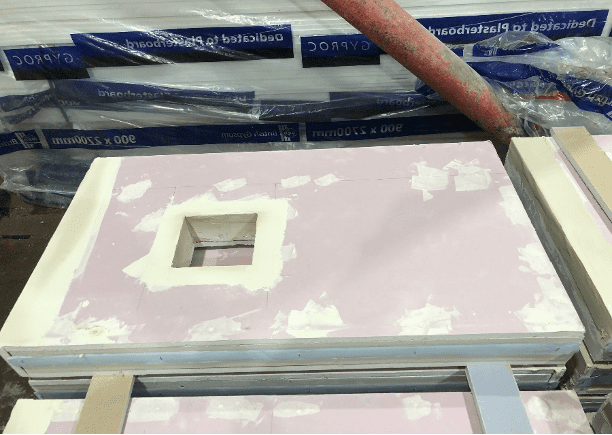Drywall is renowned for its cost-effectiveness and versatility in various construction settings, including commercial and industrial environments. Despite its many advantages, such as durability and customizability, drywall can sustain damage over time. This blog discusses common types of drywall damage in high-traffic areas and provides professional tips for maintenance and repair that are especially relevant for commercial and industrial property managers.
Common Causes of Drywall Damage in Commercial Settings
- Furniture Marks: In commercial spaces, furniture and equipment can often scuff or mark drywall. While these marks are generally cosmetic, maintaining an impeccable appearance is crucial in a professional environment.
- Nail Holes: Frequent changes in office layouts or public postings can lead to numerous nail holes. Although minor, these can detract from a clean professional appearance if not properly managed.
- Cracks in Drywall: Structural shifts, temperature fluctuations, and humidity levels typical in large buildings can lead to drywall cracks. These might signal deeper structural issues that need immediate attention.
- Door Handle Damage: In busy commercial spaces, door handles may repeatedly impact drywall, causing dents or holes that can affect both aesthetics and wall integrity.
- Water Damage: Industrial environments, in particular, may be prone to water damage due to extensive piping and exposure to the elements. Water damage can compromise the structural integrity of drywall and lead to mould issues.
Top Tips for Repairing and Maintaining Drywall in Commercial and Industrial Spaces
Addressing Furniture Marks
- Quick Fixes: For light scuffs, gently rubbing with a damp sponge can remove marks. For more persistent scuffs, repainting or applying a small amount of wallpaper may be necessary.
- Preventive Measures: Ensure there’s adequate space between furniture and drywall surfaces to prevent marks.
Repairing Nail Holes
- Filling and Finishing: Fill nail holes with spackles, sand them smooth, and touch up with paint. Consider using paintable wall panels in high-traffic areas to make maintenance easier.
Managing Cracks
- Early Intervention: Determine the cause of the crack and address it immediately to prevent worsening. Use a joint compound for minor repairs or consult a specialist for significant issues.
Fixing Door Handle Damage
- Patch and Paint: Patch holes caused by door handles, sand to a smooth finish, and repaint. Install backplates to prevent future damage.
Resolving Water Damage
- Comprehensive Approach: For extensive damage, replace the affected drywall sections. For localised issues, repair the source of the water leak before fixing the drywall.
Drywall Solutions for Commercial and Industrial Use
Drywall Pro-cut offers tailored drywall solutions that stand up to the demands of commercial and industrial environments, including moisture – resistant and fire-rated options that enhance both safety and durability.
- Custom Drywall Solutions for Businesses: Explore our customised drywall solutions that cater to the unique needs of commercial and industrial spaces.
- Expert Installation Services: Learn about our professional installation services that minimise downtime and maximise durability in high-use areas.
- Cost-Effective Maintenance Plans: Inquire about our maintenance plans designed to keep your commercial or industrial property looking great and functioning smoothly.
Conclusion
Maintaining drywall in commercial and industrial settings doesn’t just preserve the building’s appearance – it also enhances the overall functionality and safety of the space.
With the right care and expertise from Drywall Pro-cut, your property can continue to meet the high standards required by your industry.


